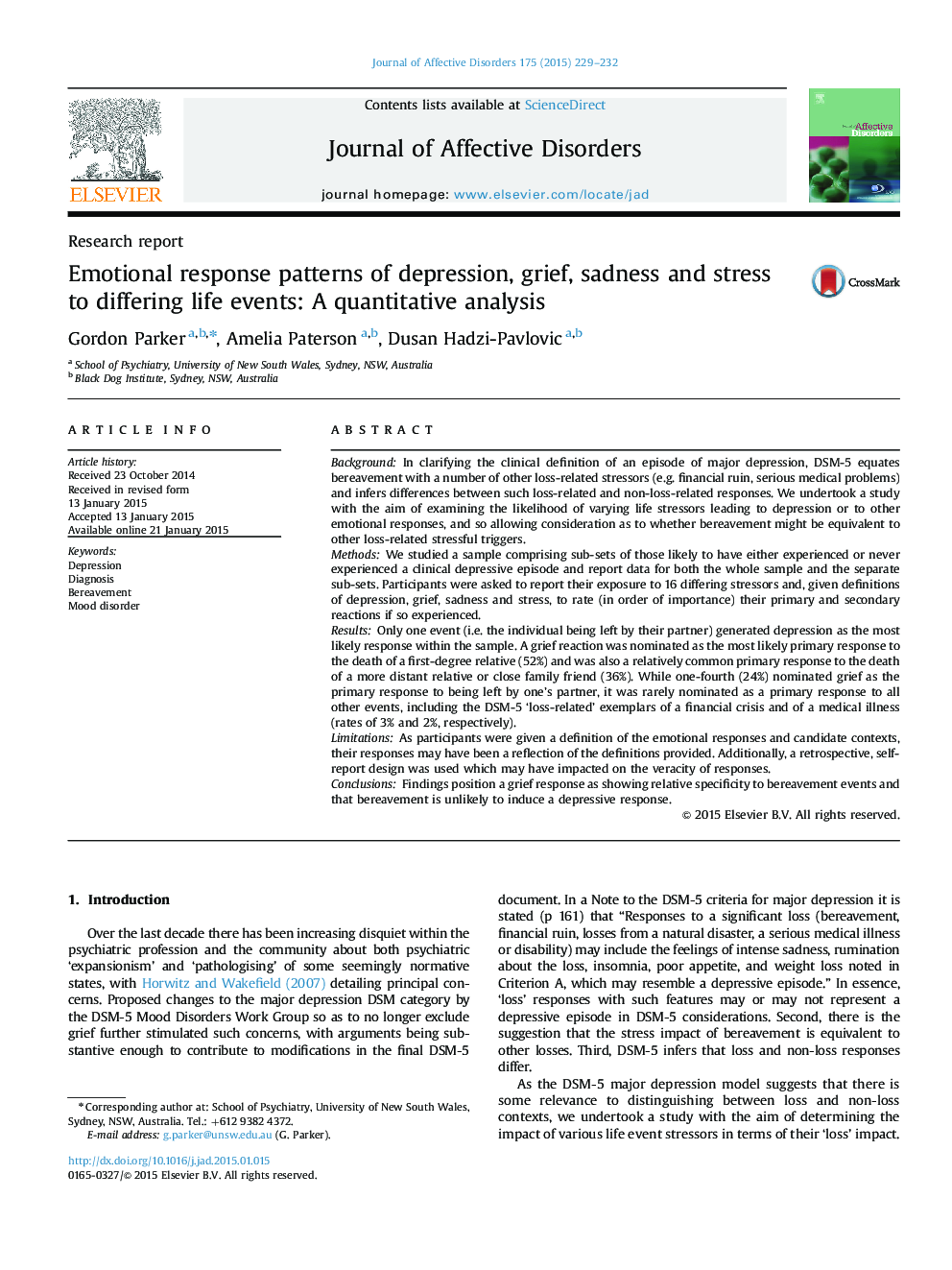| کد مقاله | کد نشریه | سال انتشار | مقاله انگلیسی | نسخه تمام متن |
|---|---|---|---|---|
| 6231965 | 1608150 | 2015 | 4 صفحه PDF | دانلود رایگان |
BackgroundIn clarifying the clinical definition of an episode of major depression, DSM-5 equates bereavement with a number of other loss-related stressors (e.g. financial ruin, serious medical problems) and infers differences between such loss-related and non-loss-related responses. We undertook a study with the aim of examining the likelihood of varying life stressors leading to depression or to other emotional responses, and so allowing consideration as to whether bereavement might be equivalent to other loss-related stressful triggers.MethodsWe studied a sample comprising sub-sets of those likely to have either experienced or never experienced a clinical depressive episode and report data for both the whole sample and the separate sub-sets. Participants were asked to report their exposure to 16 differing stressors and, given definitions of depression, grief, sadness and stress, to rate (in order of importance) their primary and secondary reactions if so experienced.ResultsOnly one event (i.e. the individual being left by their partner) generated depression as the most likely response within the sample. A grief reaction was nominated as the most likely primary response to the death of a first-degree relative (52%) and was also a relatively common primary response to the death of a more distant relative or close family friend (36%). While one-fourth (24%) nominated grief as the primary response to being left by one's partner, it was rarely nominated as a primary response to all other events, including the DSM-5 'loss-related' exemplars of a financial crisis and of a medical illness (rates of 3% and 2%, respectively).LimitationsAs participants were given a definition of the emotional responses and candidate contexts, their responses may have been a reflection of the definitions provided. Additionally, a retrospective, self-report design was used which may have impacted on the veracity of responses.ConclusionsFindings position a grief response as showing relative specificity to bereavement events and that bereavement is unlikely to induce a depressive response.
Journal: Journal of Affective Disorders - Volume 175, 1 April 2015, Pages 229-232
